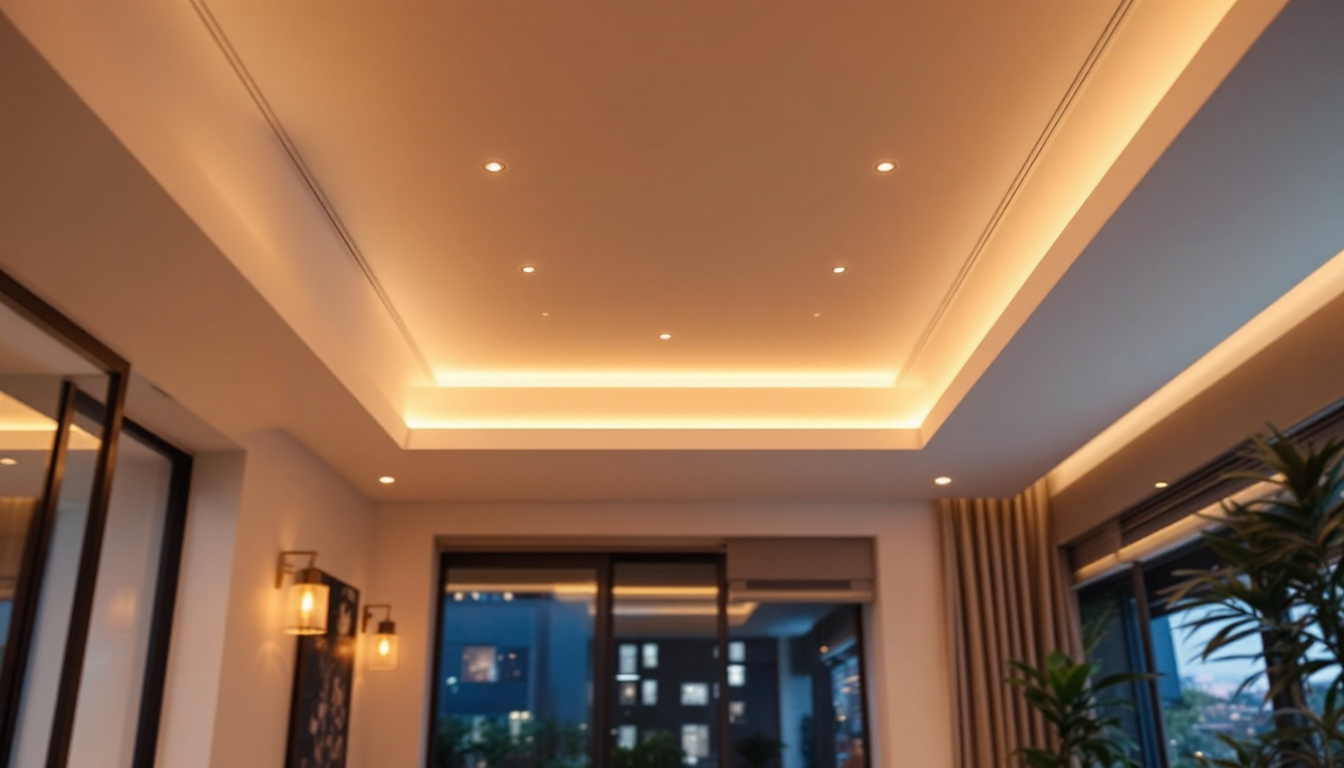
In the realm of electrical installations, wall sockets play a crucial role, especially when it comes to lighting systems. Understanding the intricacies of wall sockets is essential for lighting contractors, as they directly influence the efficiency, safety, and functionality of lighting solutions. This article delves into the various aspects of wall sockets, including types, installation practices, safety considerations, and emerging technologies.
Wall sockets, also known as electrical outlets, are devices that allow electrical appliances to connect to the power supply. They are integral to any lighting system, providing the necessary connection points for lamps, fixtures, and other electrical devices. The design and functionality of wall sockets can vary significantly based on regional standards and specific applications. In addition to their basic function of powering devices, wall sockets also play a crucial role in the overall safety and efficiency of electrical systems, making their understanding essential for both homeowners and professionals in the field.
There are several types of wall sockets, each designed for specific uses and environments. The most common types include standard, GFCI (Ground Fault Circuit Interrupter), and smart sockets. Understanding these types is essential for selecting the right socket for a particular lighting project. Furthermore, as technology advances, new types of sockets are emerging, offering innovative features that enhance user experience and energy management.
Standard wall sockets are the most widely used type and are typically rated for 15 or 20 amps. They are suitable for general lighting and appliance use. These sockets usually come in two or three-prong configurations, accommodating a variety of plugs. For lighting contractors, ensuring that standard sockets are installed correctly is vital for the safety and reliability of the lighting system. Additionally, the materials used in standard sockets can vary, with options including plastic and metal, which can affect durability and aesthetic appeal. Proper installation techniques, such as securing the socket to the wall and ensuring proper grounding, are also critical to prevent hazards such as electrical fires or shock.
GFCI sockets are designed to protect against electrical shock by interrupting the circuit if a ground fault is detected. They are commonly used in areas where water is present, such as kitchens and bathrooms. For outdoor lighting installations, GFCI sockets are also recommended to enhance safety. Understanding the local codes regarding GFCI installation is crucial for compliance and safety. Moreover, GFCI sockets often come with a reset button, allowing users to easily restore power after a trip, which is particularly useful in high-traffic areas where the risk of accidental water exposure is higher. Regular testing of GFCI functionality is also advised to ensure ongoing protection, making them a critical component of any responsible electrical installation.
Smart sockets are part of the growing trend towards home automation. These sockets can be controlled remotely via smartphone apps or voice assistants, allowing for enhanced control over lighting systems. For lighting contractors, integrating smart sockets into designs can add significant value, offering clients convenience and energy efficiency. Additionally, many smart sockets come equipped with features such as energy monitoring, which provides users with insights into their energy consumption patterns. This data can help homeowners make informed decisions about their energy use, promoting sustainability and potentially lowering utility bills. As smart home technology continues to evolve, the integration of smart sockets into existing electrical systems is becoming increasingly seamless, paving the way for a more connected and efficient living environment.
Proper installation of wall sockets is essential for ensuring the safety and effectiveness of lighting systems. Adhering to best practices during installation can prevent electrical hazards and ensure compliance with local codes. A well-executed installation not only enhances functionality but also contributes to the overall aesthetic of a space, allowing for a seamless integration of electrical components into the design.
Choosing the right location for wall sockets is critical. Sockets should be installed at a height that is easily accessible while also considering the placement of light fixtures. For example, in living rooms, sockets should be positioned to accommodate floor lamps and table lamps without being obstructed by furniture. Additionally, in areas such as kitchens and home offices, it’s important to think about the workflow and how appliances or devices will be used. Placing sockets near countertops or workspaces can significantly enhance convenience and efficiency, allowing for easy access to power when needed.
Wiring is a fundamental aspect of socket installation. It’s essential to use the correct gauge wire based on the socket’s amperage rating. For standard sockets, 14-gauge wire is typically used for 15-amp circuits, while 12-gauge wire is suitable for 20-amp circuits. Ensuring that the wiring is properly insulated and secured is vital to prevent electrical faults. Furthermore, it’s advisable to consider the length of the wire runs; longer distances may require larger gauge wire to minimize voltage drop, which can affect the performance of connected devices. Regular inspections of the wiring during installation can help identify any potential issues early on, ensuring a safer and more reliable electrical system.
All installations must comply with local electrical codes and regulations. These codes dictate various aspects of socket installation, including spacing, height, and the use of GFCI sockets in specific areas. Familiarity with these codes not only ensures safety but also protects contractors from potential legal issues. In addition to adhering to the codes, it is also beneficial to stay updated on any changes or amendments to local regulations, as these can evolve over time. Engaging with local electrical inspectors during the planning phase can provide valuable insights and help ensure that all installations meet the necessary standards, ultimately leading to a safer environment for all users.
Safety should always be the top priority when working with electrical installations. Understanding the potential hazards associated with wall sockets and implementing safety measures can prevent accidents and injuries.
Grounding is a critical safety feature for wall sockets. Properly grounded sockets reduce the risk of electrical shock and help protect sensitive electronic devices from power surges. Contractors should ensure that all sockets are grounded according to local regulations and that the grounding connections are secure.
Managing the electrical load is essential to prevent overheating and potential fire hazards. Each socket has a maximum load capacity, and exceeding this can lead to dangerous situations. For lighting systems, it’s important to calculate the total load of all connected fixtures and ensure that it does not exceed the socket’s rating.
Regular inspections of wall sockets and connected devices can help identify potential issues before they become serious problems. Signs of wear, such as discoloration, heat, or unusual noises, should be addressed immediately. Encouraging clients to schedule routine electrical inspections can enhance safety and prolong the lifespan of their lighting systems.
As technology continues to advance, new innovations in wall sockets are emerging, offering enhanced functionality and convenience. Staying informed about these developments can help lighting contractors provide cutting-edge solutions to their clients.
USB charging sockets have become increasingly popular, allowing users to charge devices without needing a separate adapter. These sockets are particularly useful in areas where multiple devices are used, such as offices and living rooms. Installing USB sockets can enhance the versatility of lighting systems, making them more appealing to clients.
Energy monitoring sockets provide real-time data on energy consumption, helping users manage their electricity usage more effectively. These sockets can be integrated into smart home systems, allowing for remote monitoring and control. For lighting contractors, promoting energy-efficient solutions can attract environmentally conscious clients.
Wireless charging technology is making its way into wall sockets, allowing users to charge compatible devices simply by placing them on the socket. This innovative feature can enhance the convenience of lighting installations, particularly in residential settings. As this technology evolves, it may become a standard feature in modern lighting designs.
Selecting the appropriate wall socket for a lighting project involves considering various factors, including the intended use, location, and client preferences. A well-informed choice can significantly enhance the functionality and safety of the lighting system.
Understanding the specific needs and preferences of clients is crucial when selecting wall sockets. Some clients may prioritize energy efficiency, while others may seek advanced features like smart technology. Engaging in a thorough consultation can help identify the best options for each project.
The environment in which the sockets will be installed can also influence the choice of wall sockets. For outdoor lighting, weather-resistant sockets are essential to ensure durability and safety. In areas prone to moisture, GFCI sockets are a must. Evaluating these factors will help ensure the longevity and reliability of the installation.
Budget constraints are often a significant factor in the selection of wall sockets. While it may be tempting to opt for the cheapest options, investing in high-quality sockets can pay off in the long run through reduced maintenance and increased safety. Providing clients with a range of options can help them make informed decisions that align with their budget.
Wall sockets are a fundamental component of any lighting system, and understanding their various aspects is essential for lighting contractors. From selecting the right type of socket to ensuring proper installation and safety, every detail matters in creating effective lighting solutions. As technology continues to evolve, staying informed about emerging trends and innovations will enable contractors to offer cutting-edge solutions that meet the needs of their clients. By prioritizing safety, compliance, and client satisfaction, lighting contractors can enhance their reputation and ensure successful project outcomes.
Ready to elevate your lighting projects with the highest quality sockets and lighting accessories? Look no further than LumenWholesale, where we specialize in providing lighting contractors with spec-grade products at unbeatable wholesale prices. Say goodbye to local distributor markups and hello to our extensive selection that meets rigorous industry standards. With LumenWholesale, you’ll enjoy the convenience of bulk buying with free shipping, ensuring you get the best value without any hidden fees. Don’t compromise on quality or cost—discover wholesale lighting at the best value today and light up your projects with confidence.

Discover how incorporating recessed LED lights into your projects can give you a competitive edge in the lighting industry.

Explore the ultimate guide to DLC lighting versus its alternatives, tailored for lighting contractors.
Discover how the latest LED light technology can revolutionize your lighting projects by boosting efficiency and reducing costs.

Discover essential insights into fluro tube sizes with our expert tips tailored for lighting contractors.